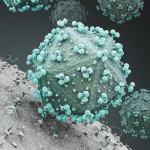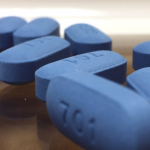When I returned to NMAC in April after exactly 30 years, I went down memory lane. April 1994 was a busy time for me. I had turned in my master’s thesis at the University of North Carolina at Chapel Hill and was running the review process for the state health department’s first Housing Opportunities for Persons With AIDS grant applicants and studying for finals, and my friend Phil from Maryland had died of an AIDS-related illness.
I felt compelled to find time and make the journey from Chapel Hill to Washington, DC, for his memorial service. Phil’s service was one of several that I and others attended in the 1990s, the early days of the epidemic before effective HIV treatment was available.
While in DC that weekend in April 1994, I saw an ad in the Washington Blade. The National Minority AIDS Council (now known as NMAC) was hiring technical assistance specialists to provide capacity-building assistance to community-based organizations providing HIV prevention and treatment services for people of color.
Between the last week of class and final exams, I returned to DC for an interview with Paul Kawata, NMAC’s executive director, and Pablo Manuel Magaz, who was NMAC’s director of technical assistance. It changed my life and altered my journey into HIV, public health and health policy.
What I remember most about working at NMAC from 1994 to 1997 was the pace and the passion. We were the Fast and the Furious before it was a movie franchise: fast-paced because we knew lives were at stake and furious and passionate because all of us had lost friends and lovers, like Phil, Dennis, Marc, Janet and Tracey.
The loss was enormous. We felt the injustice and knew they deserved better access to HIV research, testing, prevention, care and treatment. Dr. Martin Luther King Jr. once said, “Of all the forms of inequality, injustice in health care is the most shocking and inhumane.” We saw the inequality and demanded humane responses from the government and society with a sense of urgency, often without apology.
Leaving NMAC in 1997, I joined the Health Resources and Services Administration and remained in the federal government until January 2024 to advance HIV programs and policy. My decades of fast-paced and passionate work in and with the government focused on creating and making systems work better for our communities—in memory of those we lost and those harmed by the government and society.
While leading the development of our National HIV/AIDS Strategy, I included a sense of urgency, passion and a need to address injustice in this national plan. Our current national strategy calls for us to accelerate our efforts, use science and data and focus on priority populations. It acknowledges that we cannot end the HIV epidemic if we do not address the HIV disparities among communities of color.
As I began a new, yet familiar, journey at NMAC in April, we convened the eighth annual Biomedical HIV Prevention Summit in Seattle to highlight the implementation of biomedical tools in our prevention and treatment efforts. Centered on research, science and data, the summit’s goal was to bring science back to the community and create access to the biomedical tools to help end the HIV epidemic.
I am excited to be back at NMAC. I look forward to working with government, academia, the private sector and the community in this new role. I am older and wiser, but, 30 years later, I have a greater sense of urgency, passion and fury at the injustices and health disparities that still persist. I hope you will join me.







Comments
Comments